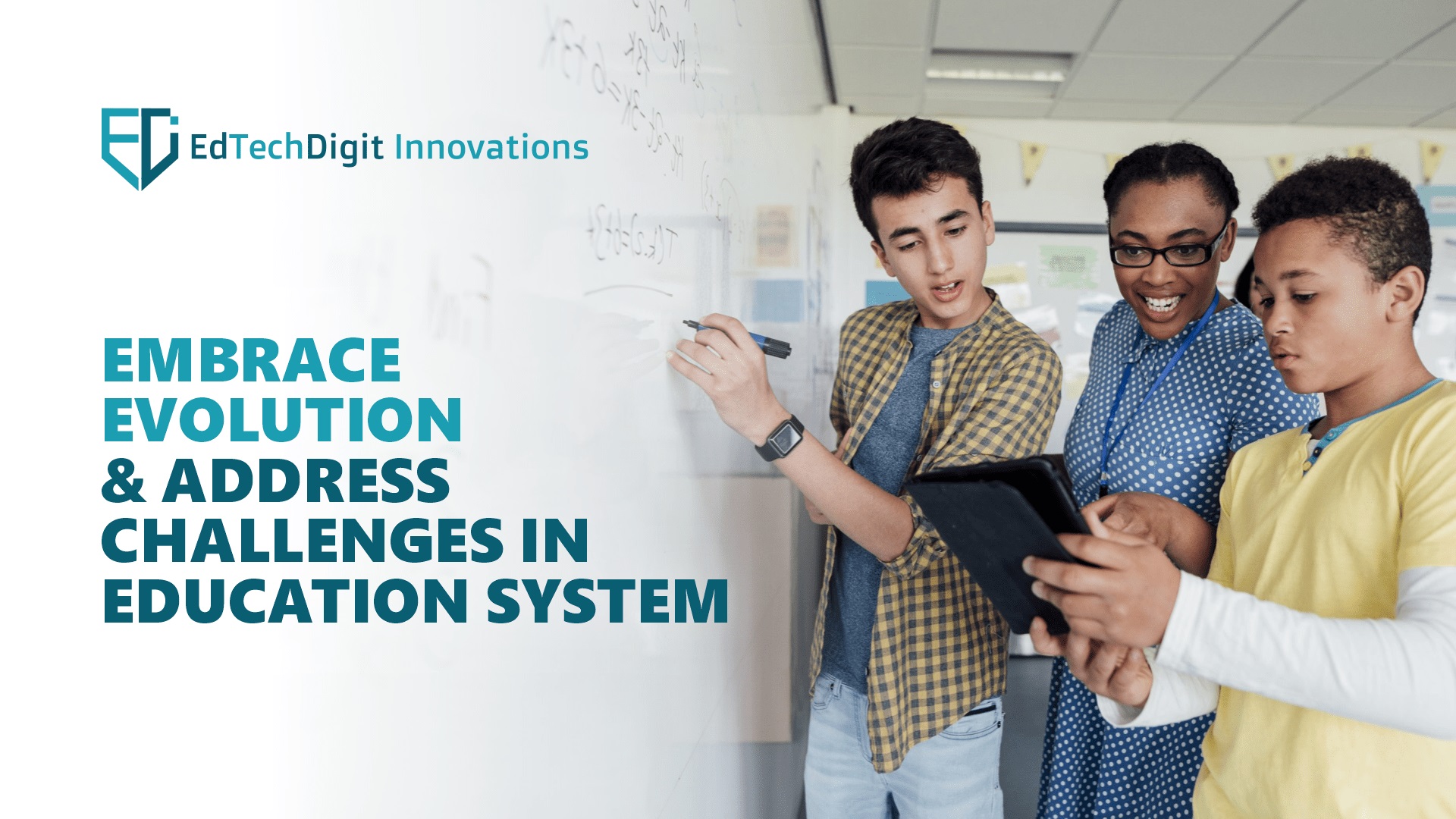Our world has been witnessing some drastic transformation in the last few years and there can be numerous reasons behind that. Advancement in technology, evolution of societal structures, and expansion of body of knowledge are a few factors behind evolution of world. This changing environment has its biggest impact on the education system which is a cornerstone in the progress of society and this system itself is witnessing huge transformation.
The traditional education system involves classroom teaching and learning and the outdated pedagogical approach is somewhat becoming irrelevant in today’s world driven by AI and other sorts of technologies. This has made it necessary for a fundamental shift where we embrace evolution and proactively address the challenges posed by them in the education system.
The Need for Evolution
The previous education model required rote memorization, standard testing methods like exams, and a one-size-fits-all approach. But this is changing and is not at all suitable in today’s world with varied individual requirements. This industrial-era education system was best only to produce compliant workers for factories.
However, today’s world requires individuals to be creative, critical thinkers, problem-solvers, and leaders. We are in a world where a lot of tasks are performed by automation and intelligence machines and as we progress toward the future, the use of technology will penetrate every aspect of our lives.
So, how can traditional methods of education help students succeed in their careers in the world of AI and automation?
Not just that, easy availability of internet, proliferation of smart devices, and digital revolution have made access of information easier for everyone and therefore, the traditional schoolteachers are not the only source of knowledge to rely on, especially in higher education where numerous trainings, video tutorials, and certifications are available online. Students today can find their answers and clear their doubts easily by accessing information at their fingertips. Educators, therefore, now have to focus on delivering content instead of teaching lessons.
Key Challenges and Opportunities to Consider
The evolution of the world presents several challenges to modern day education system. But they also offer unique opportunities to grow and innovate.
- Bridging the Digital Gap
Technology offers huge potential to enhance learning but the digital divide i.e., gap between those who have access to technology and those who do not is a huge factor behind growing inequality.
So, it becomes the need of hours to make access to technology, internet connectivity, and digital literacy training accessible to everyone. And it will require a huge investment in infrastructure, resources, and teacher training.
- Personalized Learning
Now is the time to acknowledge that every individual is different, and every student has a different learning style. Traditional classrooms never paid attention to this and never catered to diverse learning styles, paces, and needs.
Today's education system has a personalized learning approach which is powered by technology, data, and AI and this is helping improve customize course and pace according to individual student. Adaptive learning platforms, providing individual feedback, and flexible learning modes are some ways to do this.
- Teacher Training and Professional Development
Teachers are the heart of the education system, and it is necessary to develop them professionally for successful use of technology in education. Teachers should be provided with ongoing training and support so that they can use technology in their teaching and implement personalized learning strategies.
- Assessments
Traditional test methods mostly focused on memorization and were not so effective in assessing the deeper learning and the 21st century skills which employers of modern-day businesses need.
So, now we need a more realistic and authentic assessment method that can measure student’s ability clearly and assess how they can apply their knowledge to solve problems and how critically they can think. Project-based assessments, portfolios, performance-based tasks are some advance assessment methods.
- Addressing Socio-emotional Needs
The focus on academic achievement must not overshadow the importance of student’s socio-emotional well-being. So, we must focus on creating a more supportive and inclusive learning environment which will help address student’s social, emotional, and mental health needs. This will mean overall development and academic success.
How to embrace Innovation and Change
Addressing these challenges needs everyone’s contribution including educators, policymakers, parents, and society. Here are a few things that should be done:
- Investment in research and development
- Creating platforms for educators and other stakeholders to collaborate and share best practices
- Encourage educators to experiment with new teaching techniques
- Build strong partnership with parents, businesses, and community organizations to create a supportive environment for students
Conclusion
Finally, we must understand that the education system now is at the crossroads. The traditional education system is now facing great challenges, however, the opportunities for transformation are also infinite. We must, therefore, embrace evolution to tackle the key challenges and encourage to build a culture of innovation. This will help us create an education system that will prepare students to succeed in the 21st century business environment.

